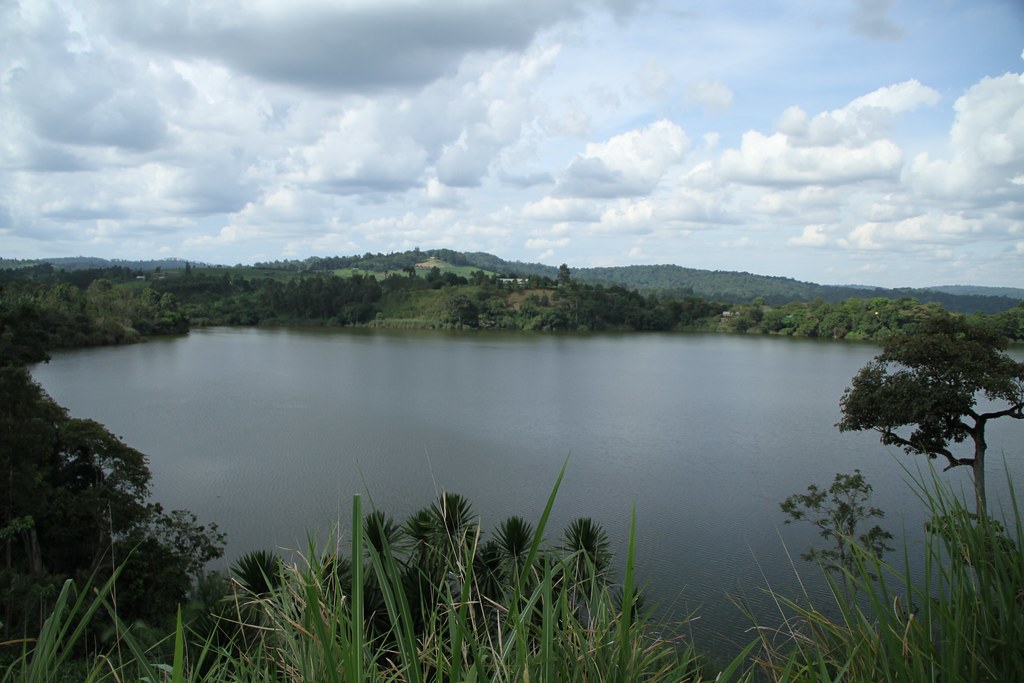In Kibale National Park, Crater Lakes
Kibale National Park’s crater lakes provide the most breathtaking scenery and abundant natural resources for authentic activities. To provide you the finest experience in Kibale National Park, the safaris are enhanced by the crater lakes in addition to the chimpanzees. The Kabarole district contains Kibale’s crater lakes, which are primarily located in the Ndali Kasenda crater area. Kibale National Park’s crater lakes create a striking scene beneath the sharply sloping hills in western Uganda.
The Ndali Kasenda Craters are the well-known crater lakes in Kibale National Park. Ndali Kasenda is a natural area on the outskirts of Queen Elizabeth National Park and Kibale National Park in western Uganda that is littered with several volcanic depressions. Situated between Kibale National Park and Kamwenge Road, the location of the craters in Kibale is significantly higher than sea level and is known as the Top of the World Trail. From this road, you may enjoy a breathtaking view of the nearby crater lakes and explosion craters.
Crater lake formation
The Ndali Kasenda Craters in Kibale National Park and the Crater Lakes in Uganda are extremely old volcanic formations. It is thought that they formed a long time ago, roughly 10,000 years ago. Depressions are left behind as a result of the surface being blown off by the intense volcanic activity. The crater lakes are excellent places for trekking because of the obvious rim that the explosion’s debris left around the depression. Some of the depressions remained as depressions, while others were later filled with rainfall to become lakes.
Because of the ongoing volcanic activity beneath the lake, some of the crater lakes in Kibale National Park have clear, clean water that is suitable for swimming, while others have green, sulfuric water that is poisonous and has an unpleasant, strong odor from the acidic water. The following are a several of Kibale National Park’s crater lakes.
The nearest lake to Fort Portal town is Lake Nyabikere, which is only 11 kilometers from the major road leading to Kibale National Park. Lake Nyabikere provides breathtaking views of the surrounding landscape. In addition to providing you with an opportunity to sample some of the local people’ stable fruits, such as guavas and jack fruit, the community walks around the neighboring villages will deepen your awareness of African culture.
The Lake Nkuruba Crater lies 25 kilometers south of Fort Portal Town. One of the most striking craters in the Kibale Crater Region is Lake Nkuruba. In Kibale National Park, Lake Nkuruba provides breathtaking vistas for walking safaris.
A short distance south of Lake Kuruba is Lake Nyinambuga. The beautiful waters of Lake Nyinambiga are surrounded by woods. In addition to a variety of birds that tweet in the trees, the forest is home to several primates, such as baboons and monkeys. The surrounding area’s scenery and calm are further enhanced by the woodlands around Lake Nyinambuga.
Situated to the west of Lake Nyinambuga, Lake Lyantonde is another crater lake close by. The most practical location for visitors wishing to explore the Kibale andndali Kasenda craters is Lake Lyantonde. A great addition to the chimpanzee trekking activities in Kibale National Park is the climb to Lake Lyantonde Crater.
One of the numerous crater lakes in the Ndali Kasenda crater area is Lake Kifuruka. Travelers have the opportunity to learn more about the Kibale Ndali Kasenda Crater area by visiting Lake Kifuruka. There is peace and quiet all around, with lovely views of the forest and the rolling landscape.
The crater lakes route in Kibale provides a 360-degree perspective of the surrounding area since the height of the Ndali Kasenda Crater Lakes area is higher than that of the surrounding terrain. The Ndali Kasenda Crater Area is regarded to as the top of the world for this reason. There are a lot of bomb craters scattered around the western area.
Nonetheless, the Katwe crater area of explosive craters has the largest concentration of craters. Some are close the Fort Portal, while others are in the vicinity of the Kichwamba escarpment, also referred to as the Ndali Kasenda area. Your safari in Kibale National Park should include a visit to the crater lakes.

